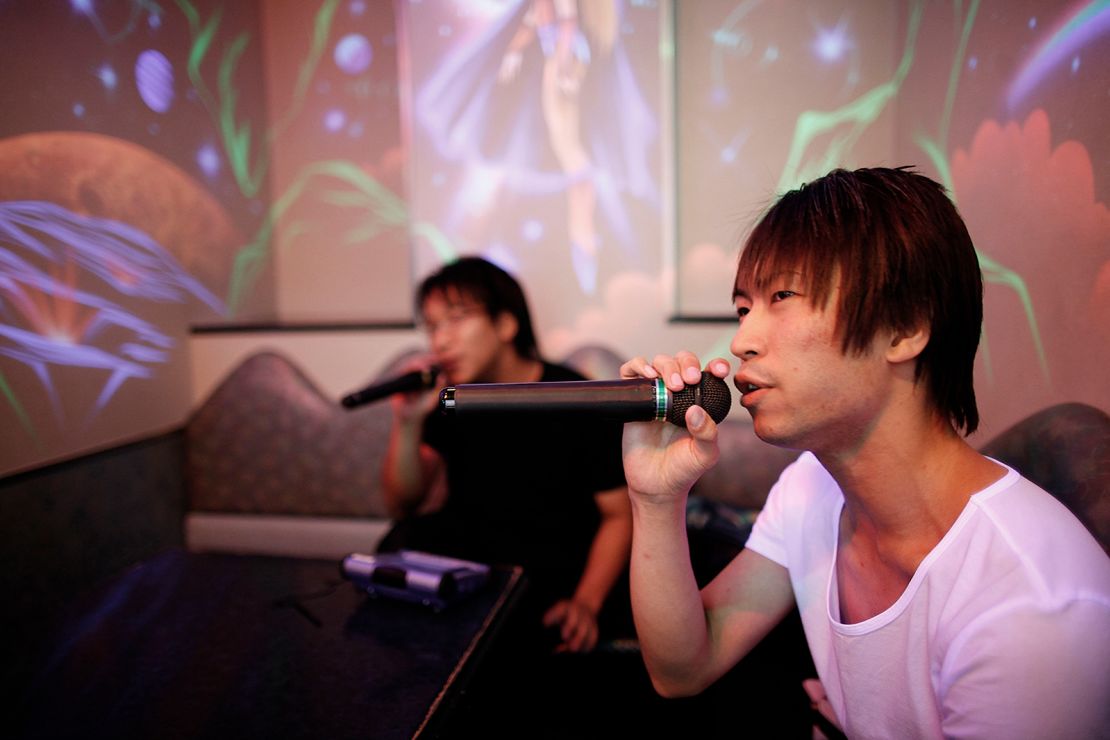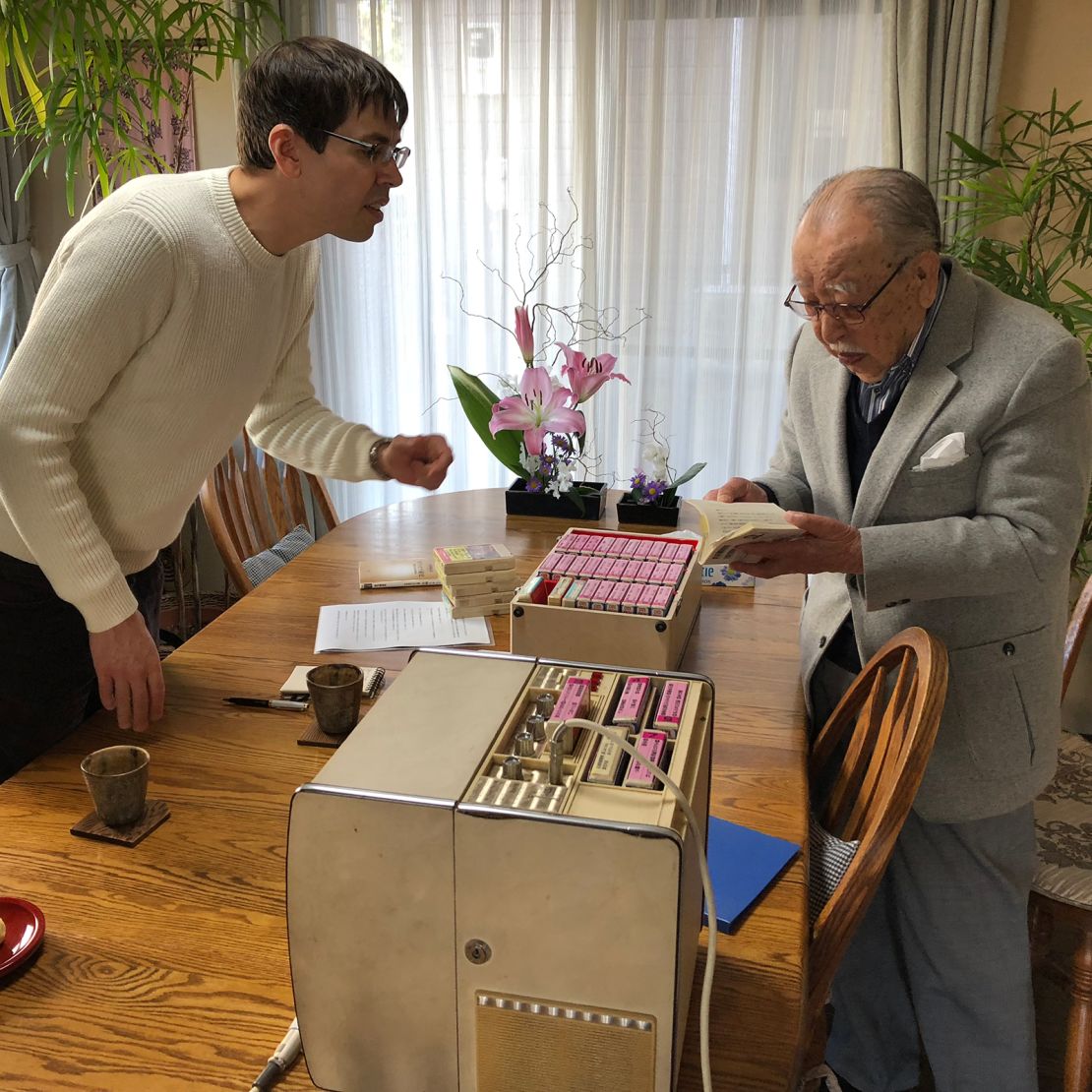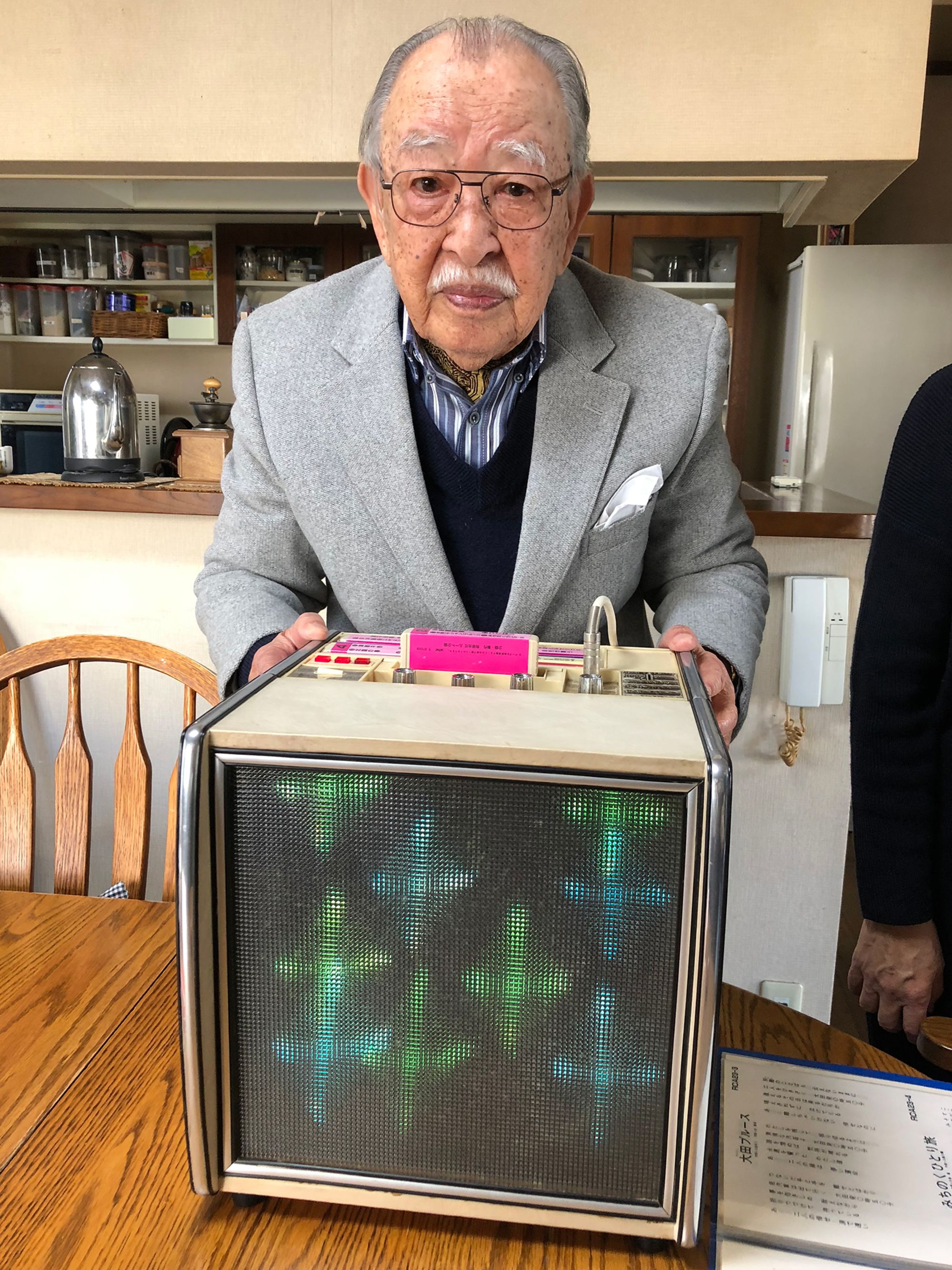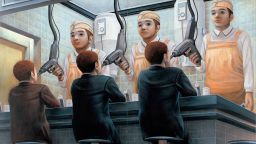Shigeichi Negishi, the entrepreneur who invented the world’s first karaoke machine, has died aged 100.
Negishi, whose 1967 “Sparko Box” prototype is among several devices credited with ushering in Japan’s karaoke craze, died from natural causes in January. His death, which was made public last week, was confirmed to CNN by Shiro Kataoka, managing director of the All-Japan Karaoke Industrialist Association.
Born in 1923, Negishi founded and ran a company that assembled car stereos for automobile manufacturers in northern Tokyo. A regular listener to a singalong radio show broadcast in Japan at the time, he hooked a spare tape deck up to a microphone and mixing circuit so he could hear himself singing over music.
“When I asked the factory engineer, he said, ‘It’s easy,’” Negishi recalled in an account published by the All-Japan Karaoke Industrialist Association, an industry body for Japan’s karaoke operators. “So, I attached a microphone input terminal to the car stereo and created something like the prototype of a jukebox.”

According to author Matt Alt, whose interview with Negishi features in his 2020 book “Pure Invention: How Japan Made the Modern World,” the inventor first tested the device with an instrumental tape of Yoshio Kodama’s 1930s song “Mujo no Yume.”
“It works!” he told Alt, recalling the moment he heard his voice coming through the speakers alongside the music. “That’s all I was thinking. Most of all, it was fun. I knew right away I’d discovered something new.”
Marketing the device as a Sparko Box, he sold them alongside lyrics cards and reportedly produced and installed around 8,000 around Japan, mainly at bars and restaurants. By the time Negishi stopped selling the products in the 1970s, several rival machines had been invented and taken to market.
“At that time, it was not customary to sing in stores, so it may have been inevitable that (the Sparko Boxes were) sold as background music,” reads Negishi’s entry on the All-Japan Karaoke Industrialist Association’s website. “Now that I think about it, it’s a bit of a shame.”

The industry body does not credit a single person with inventing karaoke (which literally translates as “empty orchestra”), but instead recognizes several people who independently created machines in the late 1960s and early 1970s.
Perhaps the best known of them is musician and businessman Daisuke Inoue, whose 8 Juke machine — invented in 1971, and also based on a car stereo — is credited with helping commercialize karaoke.
But Inoue, like Negishi, did not patent his invention, and electronics manufacturers soon began producing and marketing their own versions. By the 1980s, “karaoke boxes” (known elsewhere as KTVs) had swept Japan, with private rooms overtaking bars and restaurants as the main venues for Japan’s amateur singers.
Subsequent developments, including the introduction of video karaoke and networked karaoke systems, helped the phenomenon spread across Asia and the world in the following decades.
Today, Japan is home to more than 8,000 dedicated karaoke box venues, while 131,500 bars are equipped with karaoke machines — a market worth a combined 387.9 billion yen ($2.6 billion) in 2022, according to estimates from the All-Japan Karaoke Industrialist Association.
CNN’s Mai Nishiyama contributed to this report.





